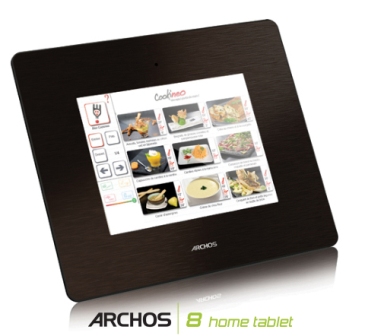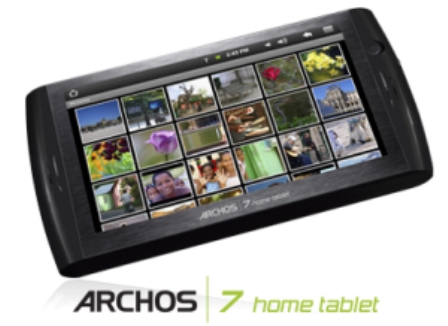Archos has revealed two new additions to its web-enabled multimedia range which are aimed for use in the home. The Archos 7 and the Archos 8 Home Tablets both run on the Android platform and are powered by ARM 9 processors.

The Archos 7 is designed to be of used as a portable device, and the Archos 8 is geared towards those who want more from their digital photo frames.
The ARCHOS Home Tablet series is the bridge between a smartphone and a desktop PC and provides a home user with Internet and multimedia content on a large screen of 7 or 8 inches.

The ARCHOS Tablets home form a separate series of Android devices based on the ARM 9 processor @ 600 MHz. The series runs alongside the Archos Internet Tablet series, and offers functions, features and applications for home use. Archos also leads the development of new Internet Tablet, and will continue in the summer of 2010, launching a completely new series that is based on ARM Cortex with up to 1 GHz, and will offer a large selection of different size screens- from 3 to 10-inches.

Both tablet devices will offer users the opportunity to take Android applications to a bigger screen, as well as delivering a video and audio player, photo viewer and all the joys that the internet has to offer via a touchscreen interface on a 600MHz ARM 9 platform.
The Archos 7 Home Tablet has a 7-inch screen, a USB connection, and built-in WiFi. It weighs less than a pound and is less than half an inch thick. Battery life is rated at seven hours of video or 44 hours of audio playback. The unit comes in either 2Gb or 8Gb varieties and will be available in April starting at $195.

The Archos 8, with an 8-inch display, is primarily for web browsing, web services and video content, but with a dedicated photo display application and a frame-like bezel surrounding the screen. Future proliferations might allow more robust media sharing and other surprises. This is the first product to incorproate any type of OS in a photo frame. Available in May, it’ll cost the same as the Archos 7 and will come only in a 4Gb version.
Published on 5 March 2010






